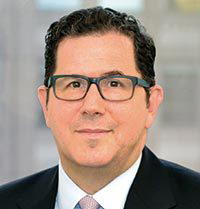

- Jim Fuell
- Head of Global Liquidity Sales, International, J.P. Morgan Asset Management
The Countdown to 2019 Begins

By Jim Fuell, Head of Global Liquidity Sales, International, J.P. Morgan Asset Management
The January 2019 deadline for the implementation of the European money market fund (MMF) regulation is now set in stone, but 44% of European respondents still need more time to understand and adapt their MMF strategy in line with the changes, according to J.P. Morgan Global Liquidity’s 2017 Investment PeerView survey [1] . For Europe’s corporate treasurers, that means now is the perfect time to get to grips with the regulation, its implications for their organisations and the opportunities that it brings.
The broader context of regulatory reform
MMF regulation is undoubtedly a milestone in the evolution of cash investment opportunities, but it is unfolding in the context of wider change. Central bank policy, such as quantitative easing, has changed market dynamics, while interest rate policy, particularly the impact of negative rates, continues to create challenges. Banks themselves are adapting to far-reaching reforms, most notably Basel III, driving a tangible shift in their approach to capital and liquidity.
Against this backdrop of shifts in the broad market and regulatory change, treasurers need to ensure that their investment policy is flexible enough to keep pace. Reassuringly, almost half of 2017 Investment PeerView respondents say they intend to review their investment policy over the next six to 12 months in response to regulatory change. However, with 82% noting that this process takes time, treasurers may need to take a proactive approach to prepare for the January 2019 deadline.
Optionality and transparency
Reviewing the investment policy represents an intuitive opportunity to reconsider risk appetite and investment objectives and constraints. By outlining a variety of different fund types (Box 1), the new MMF rules give treasurers and treasury committees the power to decide on the right choice of instrument to meet their own risk appetite and investment criteria. Rather than ramping up risk in MMFs, the new rules give investors greater choice, plus the transparency to make more informed investment decisions (Box 2). For example, 74% of 2017 Investment PeerView respondents can forecast cash flow beyond one month, enabling them to segment their cash and take advantage of higher returns by extending duration or increasing credit risk on some of their cash.
While reviewing new regulations and potentially revising investment policies may be time consuming, treasurers have not been dissuaded from investing in MMFs. The 2017 Investment PeerView survey reveals that 86% of European investors intend to maintain or increase their investment in stable net asset value (NAV) funds, a figure that rises to 96% for variable NAV funds. In addition to an inherent level of investor confidence in MMFs, these findings also reflect the difficulties that many organisations are experiencing when depositing their cash with banks, as the appetite of many banks for short-term cash is changing significantly in order to comply with Basel III. Consequently, with the opportunity to maintain same-day access to liquidity shrinking, the ability to use MMFs is becoming more important than ever.
Box 1: MMF types
Source: J.P. Morgan Asset Management |
Box 2: Comparison between current and future MMF characteristics
Source: J.P. Morgan Asset Management |
[[[PAGE]]]
Consistency and predictability
Looking at the regulations themselves, investors should not expect to see anything fundamentally new, and the benefits of MMFs continue to apply. The reforms draw together and embed existing practices, therefore giving investors greater certainty and consistency. For example, in addition to providing greater optionality, they also provide a greater emphasis on credit analysis and stress testing, introduce additional requirements on transparency and disclosure to investors, and provide enhanced portfolio diversification and concentration requirements.However, there are some features of which treasurers need to be aware. First, the current CNAV and VNAV funds will be supplemented by new LVNAV funds, meaning that existing investors need to understand the differences (summarised in Boxes 1 and 2) as existing funds are likely to be modified or transitioned to become new compliant funds, albeit in a non-disruptive way. Second, another feature of the new MMF reforms that has attracted particular discussion relates to gates and fees. While the US regulations that took effect in 2016 also include provision for gates and fees, the two sets of rules are not comparable. When compared to the US construction, the trigger mechanism itself is different, and the likelihood of activation is far lower.
Choice and commoditisation
Our discussions with clients so far show that many European investors are likely to opt for LVNAV funds in the future, not least because these are closest to the current CNAV structures. Existing investors in MMFs, both CNAV and VNAV, should therefore look to start talking to their investment managers about the implications of the rules, while ensuring that their existing investment policies are flexible enough to accommodate the new fund type.
For new investors too, the new LVNAV funds could offer an attractive alternative to bank deposits, particularly in an extended period of low or negative interest rates, so it would be timely to start discussing this option with asset managers. To help, J.P. Morgan Asset Management has introduced a European MMF Reform Resource Centre [2] on its homepage, which is updated regularly with new information and frequently asked questions based on what we’re hearing from our clients.
While the new reforms introduce greater transparency and consistency across funds, there are still notable differences between asset managers in how they adhere to the new regulations. For example, some will choose to use third party pricing for the daily NAV calculations, which is good practice, while others will rely on more opaque internal processes. Some carry more cash than the regulations require, and are less inclined to use leverage or repos to create temporary liquidity. Some invest extensively in other MMFs to create incremental returns and same day access to liquidity, which may be appropriate during normal market conditions, but can be problematic in case of market stress. As a result, MMFs should not be considered to be commoditised instruments. Beyond the CNAV space, there is even greater scope for differentiation depending on the risk appetite and liquidity requirements of each investor, so it remains important to evaluate current and potential fund managers carefully, and take well-informed decisions.
Building the right cash strategy with J.P. Morgan Asset ManagementRigorous credit and risk management, combined with access to J.P. Morgan’s global resources and expertise, help us to deliver the most effective short-term fixed income solutions for our clients. Global coordination, lasting partnerships
For more information, please visit our website www.jpmgloballiquidity.com |











